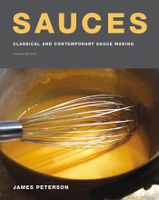Advertisement
Modernist Emulsions
Appears in
Published 1991
Modernist cooks use a number of emulsifiers, some of them hydrocolloids, some of them true emulsifiers, usually proteins. Some of these, such as agar, are first dissolved with liquid such as water or stock, allowed to gel, and the gel then pureed to make what’s called a fluid gel. Agar can also be dissolved in warm fat. This fat can then be emulsified with other ingredients. When reheated, this agar mixture functions as a powerful emulsifier. Xanthan gum is one of the easiest hydrocolloids to incorporate (it can be hydrated in either cold or hot water) and is highly effective even at low concentrations. Mono- and diglycerides (Glice), which are not hydrocolloids, are often incorporated into recipes for butter-like spreads and to stabilize custards or ice cream. Polysorbates such as Polysorbate 80 make excellent emulsifiers for mayonnaise, vinaigrettes, and shortenings made from novel ingredients such as nut oils. Propylene glycol alginate stabilizes melted butter and prevents it from breaking. Lecithin is also useful in butter or egg yolk sauces in which instability is a liability.

